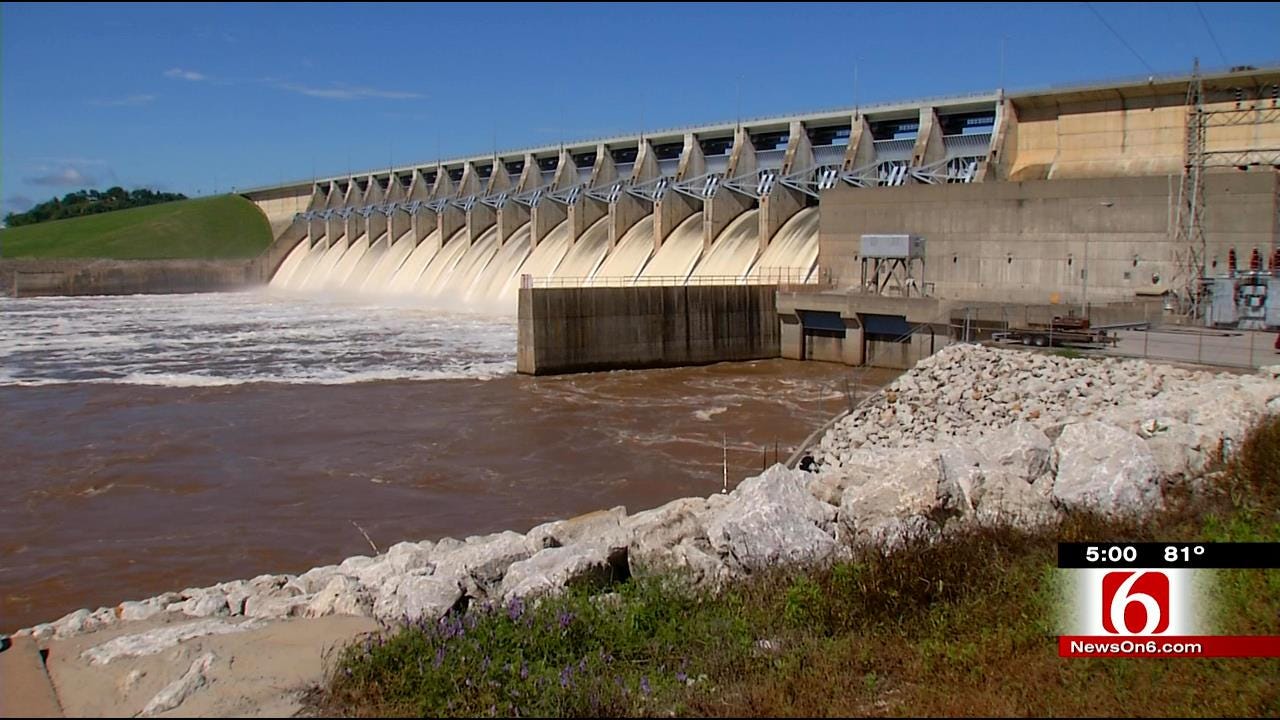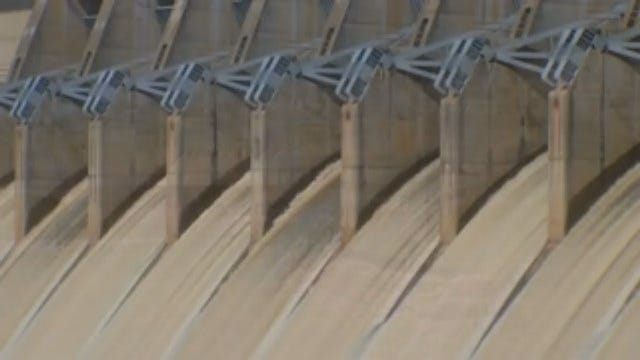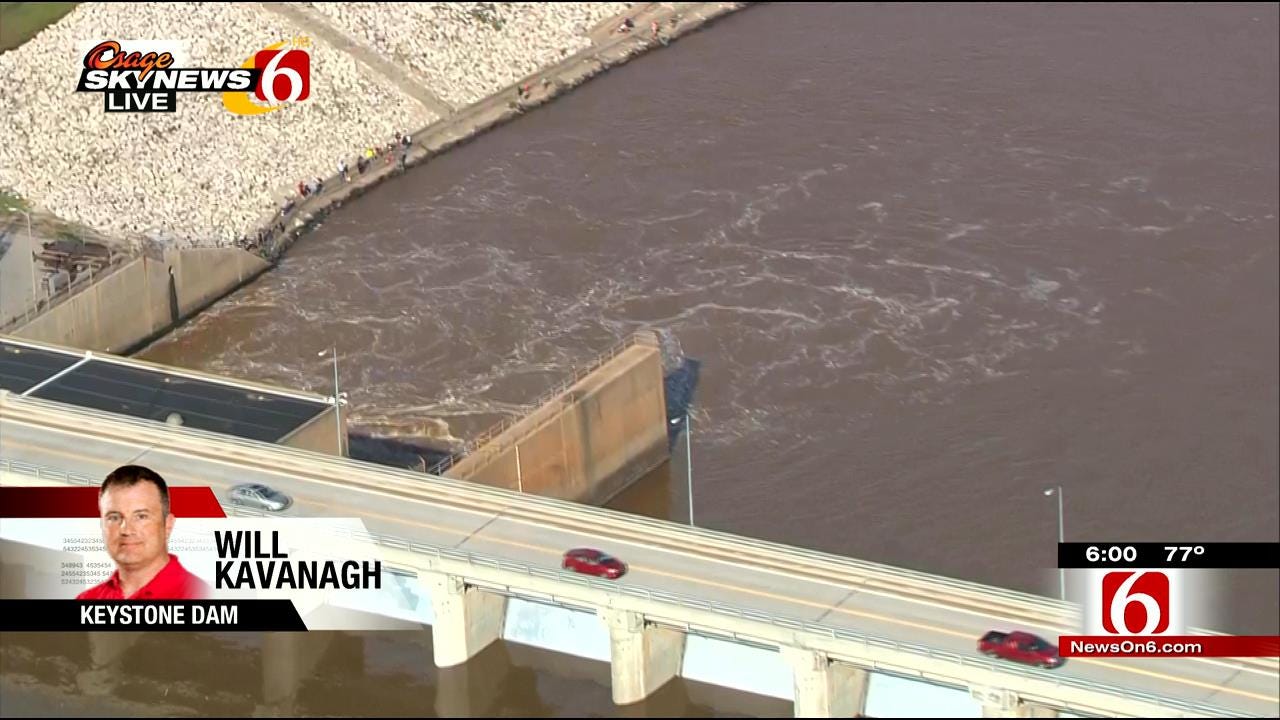Corps Of Engineers Keeping 'Round The Clock Watch On Dams, Lakes
The U.S. Army Corps of Engineers says its dams across eastern Oklahoma are holding back most of the heavy rain which has fallen over the past couple of days.Tuesday, May 26th 2015, 2:18 pm
All the recent rain is putting a burden on dams across Oklahoma and Texas.
At Lake Texoma, flooding caused water to overflow banks for only the fourth time in history.
The Army Corps of Engineers said all floodgates are partially open, releasing 270,000 gallons every second, as the lake is 26 feet above normal.
We wanted to check in on our dams, so we spoke to a Tulsa-area Army Corps engineer, who said not to worry.
The Army Corps has been releasing water off and on from floodgates at Keystone Lake. The dam is perhaps the most important in Tulsa because what happens there impacts all our other waterways.
The Army Corps of Engineers is releasing 9,000 cubic feet of water per second from Keystone Dam and Kent Dunlap with the Army Corps of Engineers said the spillway can hold a lot more.
"Keystone can release up to 900,000 CFS, but we're not going to, we hope not to go there," he said.
He says the most water ever released at Keystone was more than 300,000 cubic feet per second back in 1986.
Dunlap also said all the Tulsa-area dams are functioning as planned, but Eufaula Dam is the most stressed, releasing 170,000 cubic feet per second.
US Army Corps of Engineers Dam/Lake Status
At its maximum the Eufaula spillway can carry water released at 465,000 cubic feet per second.
"Eufaula's got a tremendous amount of water right now, both in the lake and in the system coming downstream into the lake," said Dunlap.
Dams work as systems, and Keystone is crucial to the Arkansas River system. It's the last flood control structure on the river, and that affects the Verdigris, Grand and Canadian systems.
"It has impacts all the way to the Gulf of Mexico," Dunlap said.
Keystone's capability to release more water is what's preventing flooding at lakes like Fort Gibson, Tenkiller and Eufaula - already almost 15 feet above normal levels.
Dunlap said Tulsans don't need to worry about one of our dams breaking.
“We don't have to worry about, is Keystone going to fail, is any of our structures," he said. “They're functioning just as they're designed and intended."
The Corps is releasing 25,000 cubic feet of water per second, and engineers said it doesn't start overflowing or flooding until about 100,000 cubic feet of water is released per second.
They're continuing to monitor the rainfall and how it's affecting our water systems.
More Like This
January 2nd, 2025
Top Headlines
July 10th, 2025
July 10th, 2025












